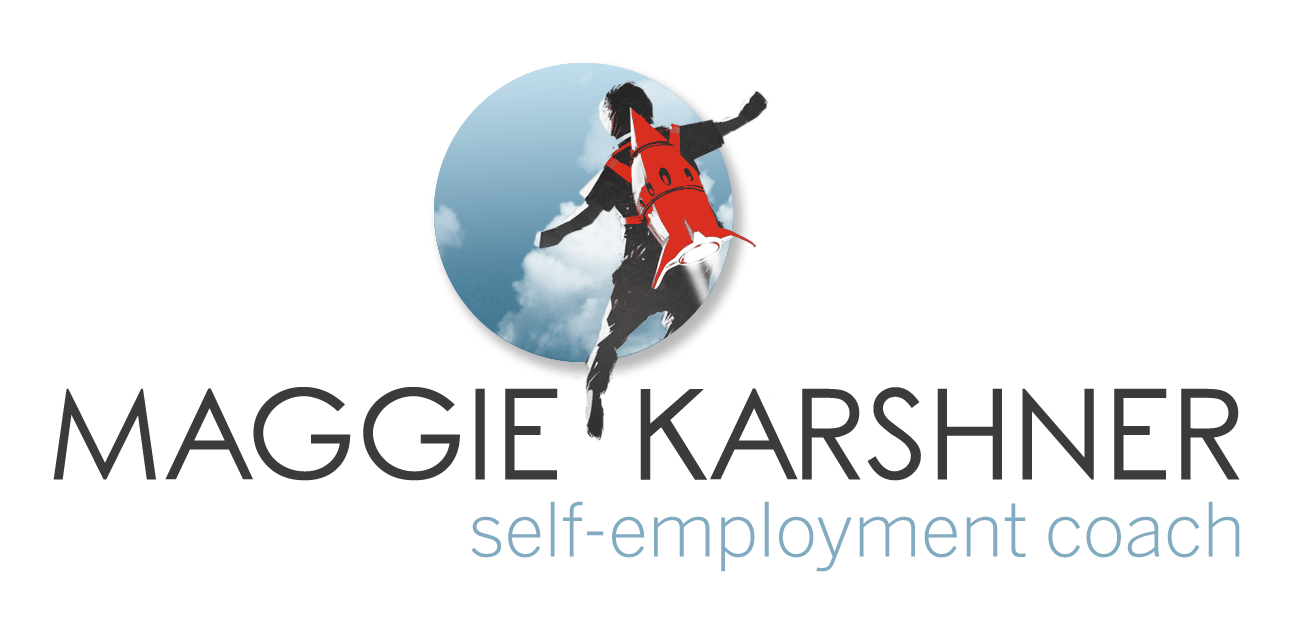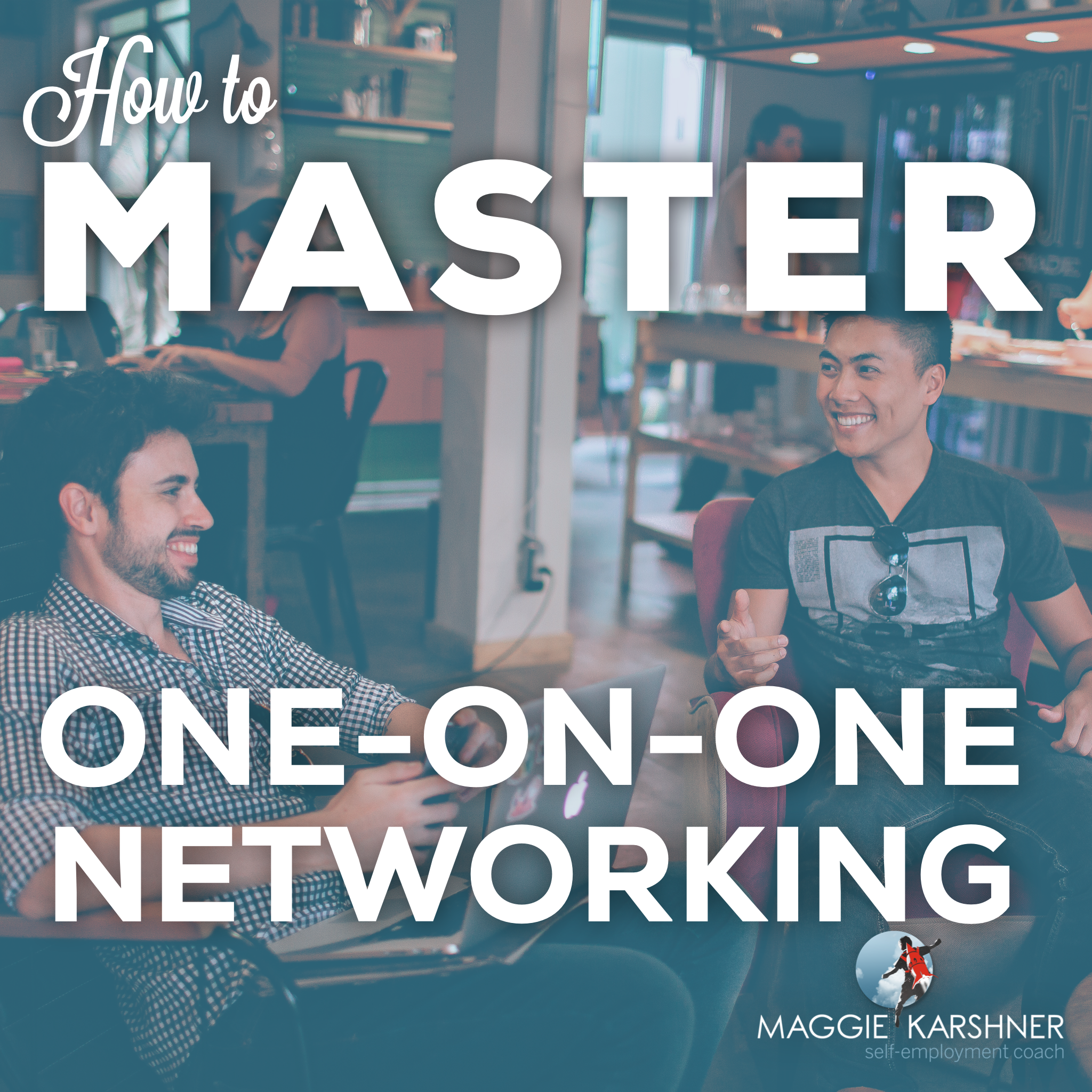How to Master One-on-One Networking
/I’ve noticed that the majority of my clients have apprehensions about meeting up with fellow professionals to connect one-on-one. This is a key part of any networking. Even if you're attending networking events, you want to connect with people one-on-one afterwards. Grabbing a coffee with a new connection is a vital step in starting to build a relationship with that new contact.
Sometimes we overthink simple things like networking, and other times things go wrong that we struggle to understand. I’m going to clarify the objectives of a networking coffee and dissect what often goes wrong with them by using my microphone metaphor. With this information you can become a master of the one-on-one networking coffee!
The Simple Objective of a Networking Coffee
First, let’s clarify the objective of a networking coffee. You’re trying to build a connection, not make a sale or land a promise of referrals. This is a chance to invest in the other person and develop a rapport. Referrals and sales come from people who trust you, so all you need to do is give them someone to trust, not push a sale. Seeking to get to know the other person is a fantastic attitude to enter a networking coffee with!
Sometimes people don’t get along. Even more often people merely lack the compatibility to hit it off with each other. This is fine. There is nothing wrong with you, and meeting someone you don’t hit it off with isn’t a waste of time. Now you know!
Sometimes the connection or lack there of isn’t mutual. (i.e. you think they’re awesome-sauce, but they’re kinda meh about you, or visa versa.) This can seem awkward, but if both parties maintain honesty with themselves and what they commit to, then this tends to work itself out without much effort.
If I were to give you a task when embarking on a networking coffee, it would be this: get to know them and get a chance to share what you do. An equal exchange of information is ideal, but uncommon, so don’t stress too much about that.
About that Equal Exchange of Information...
Ok, so now you’re in the midst of this coffee and things aren't going well. Conversation is happening but it's subtly uncomfortable and you can't quite tell why. Here’s a way I understand interpersonal dynamics that seems to clarify what’s going on: imagine in the conversation there are the two of you and there is a microphone. One of the two of you must be holding the microphone at all times (but only one of you) and the microphone must be pointed at who is speaking. The microphone can be passed between you, and pointed at each other, but the negotiation of this is typically non-verbal. (A verbal instance of this would be if someone says "may I say something?" or "can I finish?")
Who the mic is pointing towards indicates how much time and space each party get to talk. The more subtle dynamic is who is in control or driving the conversation. That’s the person who is holding the mic. Furthermore there are dynamics in regards to how the mic is passed between two people. Sometimes this is a very smooth baton hand-off. Other times it can be a bit like an assault or game of hot potato.
Conversational Flow
Ideally a conversation flows and where the mic is pointing and who is holding it shifts naturally and easily. And we've probably all been in a situation where this was not happening. Even if you each talked an equal amount, or there is equal amount of sharing that happened, something may still have felt uncomfortable. Usually this is caused by one of three things: the mic gets stuck in one orientation, the mic is pointing one direction for too much of the time, or passing the mic is not successful.
The Two Mic Orientations
A Parallel Orientation: holding the mic and pointing it towards yourself
How it goes right: The speaker gets a moment to shine! In this orientation the mic holder gets a moment to share about themselves and direct the conversation forward in the direction they want it to go. This is how you volunteer information and add to a conversation without directly being asked.
How it goes wrong: One party is talking, directing conversation, dominating the conversation, and possibly over sharing. The other is listening and any comment they make is a launching place for more from the over talker. If you leave the conversation thinking, “Man, I couldn’t get a word in edgewise!” then the mic probably got stuck in a parallel orientation.
A Perpendicular Orientation: holding the mic and pointing it away from yourself
How it goes right: this shows interest in the other person, which is very flattering. It's also necessary if you want specific information out of the other person.
How it goes wrong: One person is doing most of the talking, but the other person is doing more of the steering of the conversation. Sometimes this is very comfortable and flattering. Other times the imbalance is uncomfortable and distracting. Typically one might leave a conversation thinking “it’s kind a like I interviewed that person.”
Passing the Mic
Both mic orientations are terrible if they're experienced for too long. We want a fair bit more variety than that in life! The solution is to pass the mic so that each person can have a turn directing the conversation. Passing the mic can be tricky and many people run into problems with it. Here are some common problems I've noticed:
Hot Potato Mic - When the mic holder abandons the mic to the other person. There's no gentle offering up of the mic, rather the mic holder rather abruptly abandons responsibility for the flow of conversation to the other person. The recipient of the mic often feels put on the spot or conversationally abandoned.
Mic Grabber - When the other person snatches the mic away from you. They grab the mic at every opportunity, jumping off what you said and driving the conversation in the way they want to go. It's not an ask that you can respond to, rather you feel cut off and wish you could resume the previous train of thought in the conversation.
Mic Rejector - When the other person will *not* accept the mic at any cost! They'll answer questions, but not follow up with additional volunteered information, or further develop the direction of the conversation.
Improving Mic Hand-Offs
Owning the mic when you have it, and giving it up gracefully when you're done with it sometimes flows easily with people we're well aligned with. With perfect strangers it can be a bumpy road. Sometimes their mic passing habits will mean that we don't get along and the relationship is abandoned. (Which is a perfectly valid option!) There's also the option to learn to master the mic so you can get along with more people. (And keep in mind that you'll never get along with everyone.) Here are the skills you can work on:
Offering Up the Mic
If you often find yourself holding on to the mic, you might want to learn how to open the floor to the other person by developing some conversational practices that will let others guide the conversation. Ask open ended questions and when they’re done talking don’t jump on what they said; wait. Be patient and let them continue the thread of conversation. Most people will fill the void of silence if given enough time. Make it a game to try and find what their silence threshold is and how that differs from when they merely don't have anything more to say on that topic!
Asking for the Mic
Sometimes we run into a conversational dynamic where we have to work harder to ask for the mic. There's an inclination to label the mic-hog a narcissistic, but this is also a behavior that erupts out of nervousness. (e.g. a “nervous talker.”) Hold the mic-hog with a lot of grace and patience. When you run into someone like this, you always have the option to just let them run the mic. Sometimes fighting for the mic is just not worth it. If you do find a moment to shine, jump on it! Try having a set transition phrase in mind, for example: “you know that’s interesting... and relates to what I do...” Even if you take a breath after that, it's likely that your conversation partner will give you some space to organize your thoughts. Remember that what you have to say, and your choice of direction for the conversation is equally valid as theirs.
When You Have a Mic You Don't Want
Sometimes we end up with the mic when we weren't expecting it. Remember that having the mic thrust at you does not mean that you have to speak immediately. Feel free to give a "yeah, that is interesting... let me think on that for a moment" and take your time responding. If you truly have the mic, then you're allowed to do what you want with it, including slowing down the speed of conversation, or redirecting entirely. Feel free to change topics.
Putting this into Practice
Most of us also know our tendencies surrounding where the microphone points. Some of us love to have the microphone pointed towards us. Some of us struggle when the microphone is pointed towards us, or even freeze. Being aware of these tendencies in addition to your preference about holding the microphone can help illuminate why some interactions are less enjoyable. Hopefully most of your conversations will have a natural flow that doesn't necessitate analysis. And of course, if it’s an utterly unpleasant interaction, feel free to not make plans with this person again. You're building a relationship with the other person only if it makes sense to do so on a personal level.





